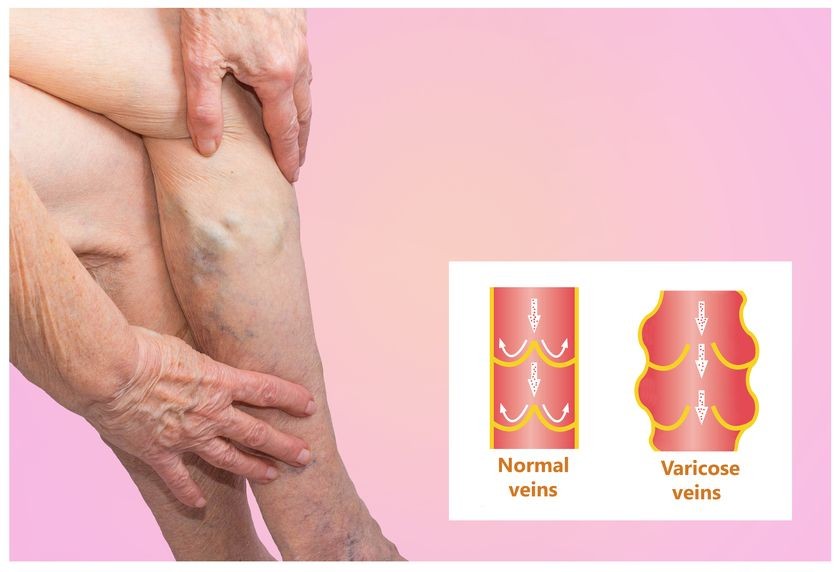What are varicose veins?
Varicose veins are veins that have become damaged and no longer function the way they’re supposed to, resulting in impaired circulation and veins that appear twisted, bulging and purplish. In the circulatory system, our arteries carry blood away from the heart and toward the organs and extremities, supplying them with blood, while the veins carry the blood back toward the heart. While arteries use the pumping force of the heart to move blood forward, the veins must rely on tiny valves located inside each vein to help blood return to the chest. Sometimes, these tiny valves can become damaged, resulting in impaired blood flow and enabling blood to become sluggish, even moving backward through the valves, causing the characteristic bluish, bulging, swollen appearance of varicose veins, as well as other symptoms like pain, tingling, itching and numbness.
Why do varicose veins occur?
The development of varicose veins usually indicates an underlying problem with the superficial or deep venous system. Other contributing factors include wear and tear due to aging, being overweight or obese, smoking and leading a sedentary or inactive lifestyle. People who have long periods of immobility are also more prone to developing varicose veins, as are those who spend long periods of time standing or sitting.
How are varicose veins treated?
There are several techniques available for the treatment of varicose veins. Before any treatment begins, the veins must be carefully evaluated to determine the extent of the damage inside the vein. Duplex ultrasound is a popular and highly effective technique for the evaluation of varicose veins, using special sound waves that are emitted painlessly through the skin where they bounce off the vein and create videos and still images of veins as well as the circulatory process. Treatment can usually be performed using minimally-invasive techniques requiring tiny incisions, resulting in faster healing and recovery and less risk of scarring or other complications. Endovenous ablation techniques using heat or chemical solutions have become especially popular in recent years, helping patients get the treatment they need to relieve symptoms without major surgery or prolonged recovery periods. Treatments are generally performed using ultrasound to guide the fibers or needle for more accurate treatment and better outcomes.


